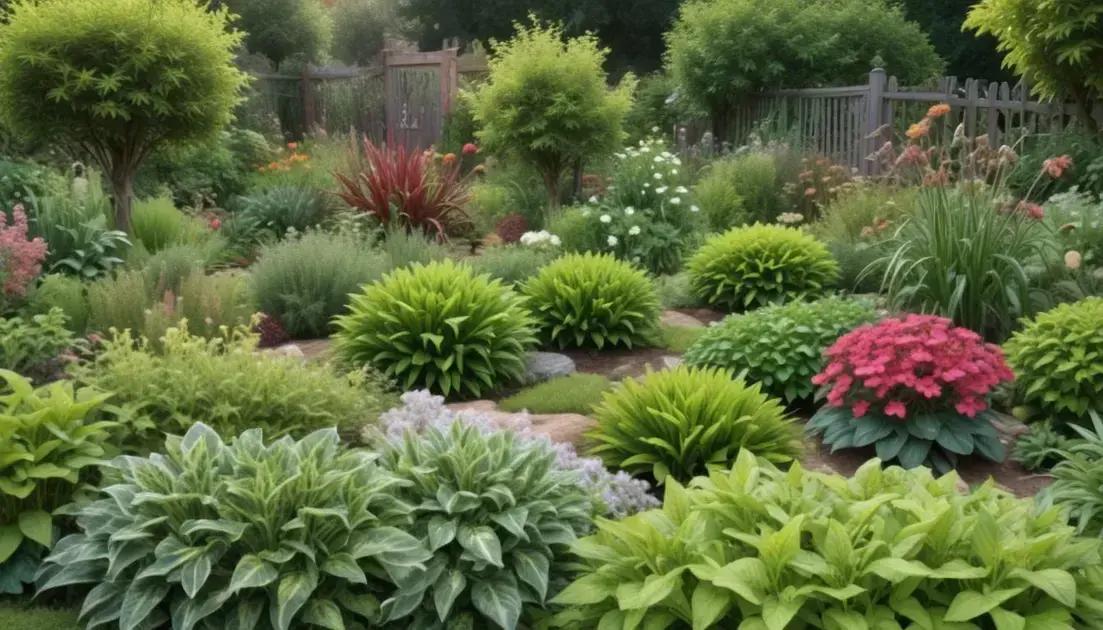Effective management of plant diseases involves identifying symptoms early, using natural and chemical treatments, ensuring soil health, utilizing technology for monitoring, and seeking professional advice when needed.
Are you puzzled by the health of your plants? A strong understanding of plant diseases guide can help you troubleshoot issues effectively. Let’s dive into simple ways to identify and treat these common problems!
Understanding common plant diseases
Understanding common plant diseases is crucial for any gardener who wants to keep their plants healthy and thriving. Many plants can be affected by diseases caused by fungi, bacteria, and viruses. Identifying these diseases early can help you take action to protect your garden.
Some of the most common plant diseases include:
- Powdery mildew: This fungus shows up as white powder on leaves and can be prevented with proper spacing between plants.
- Root rot: Often caused by overwatering, this disease leads to dark, mushy roots. Ensure your plants have good drainage to avoid this issue.
- Blight: Blight can affect both stems and leaves, causing them to wilt and brown. Keeping your plants properly pruned can reduce the risk.
- Leaf spot: This condition appears as dark or discolored spots on leaves. Fungicidal sprays can help manage it if caught early.
By learning to recognize the signs of these common diseases, you can intervene sooner and minimize damage to your plants. Regularly inspecting your garden and maintaining proper care can go a long way in preventing the spread of diseases.
Identifying symptoms in your plants
Identifying symptoms in your plants is essential for maintaining a healthy garden. Early detection of problems can save your plants from damage. Here are some common symptoms to watch for:
- Wilting leaves: If your plants are drooping or wilting, it could be due to lack of water or root issues. Check the soil moisture.
- Yellowing leaves: Yellow leaves can indicate nutrient deficiencies or overwatering. Assess your watering schedule and consider fertilizing.
- Brown spots: Dark or brown spots on leaves may signal diseases like blight. It’s important to prune affected areas to prevent spreading.
- Stunted growth: If your plants are not growing as expected, this could be a sign of root problems or pests. Examine the roots and inspect for signs of insects.
By closely monitoring your plants and noting any unusual symptoms, you can take timely action. Regular checks can help you address issues before they become serious, ensuring your garden thrives.
Natural remedies for plant diseases
Natural remedies for plant diseases are safe and eco-friendly methods to help your plants recover. Many gardeners prefer these alternatives to chemicals. Here are some effective natural remedies:
- Neem oil: This natural pesticide is derived from the neem tree. It helps control pests and fungi effectively. Dilute the neem oil with water and spray it on affected plants.
- Baking soda: A simple solution of baking soda and water can help combat powdery mildew. Mix one tablespoon of baking soda with a gallon of water and spray it on the leaves.
- Garlic spray: Garlic is known for its antifungal properties. Blend a few cloves with water, strain, and spray directly on the affected areas to deter pests and diseases.
- Companion planting: Some plants can naturally repel disease-causing insects. For example, planting marigolds near vegetables can help protect them from nematodes.
Using natural remedies can not only improve plant health but also contribute to a healthier garden ecosystem. Always remember to test any new treatment on a small area before full application.
Chemical treatments: when to use them
Chemical treatments can be effective for managing severe plant diseases when natural remedies are not enough. Knowing when to use these treatments is crucial to protect your garden and the environment.
Here are some guidelines on when to consider chemical treatments:
- Severe infestations: If you notice a large number of pests or a rapid spread of disease, chemical treatments may be necessary to control the situation effectively.
- Persistent problems: Sometimes, plants do not respond to natural remedies. If symptoms persist despite your efforts, switching to a chemical treatment can be a viable option.
- Specific diseases: Certain diseases are best treated with specific fungicides or pesticides. Research the symptoms and match them with an appropriate chemical treatment.
- Early intervention: Applying chemical treatments at the first signs of trouble can help prevent further damage and protect surrounding plants.
While chemical treatments can be effective, always follow the manufacturer’s instructions for safe application. Also, consider potential impacts on beneficial insects and pollinators.
Preventive measures for healthy plants

Preventive measures for healthy plants are essential for reducing the risk of diseases and ensuring that your garden thrives. Proactive care helps create a strong foundation for plant health. Here are some effective preventive measures:
- Regularly inspect plants: Make it a habit to check your plants for early signs of disease or pests. Catching issues early can make a significant difference.
- Maintain good soil health: Healthy soil promotes strong plants. Add organic matter like compost to improve soil structure and nutrient content.
- Proper watering techniques: Water plants at the base rather than from above. This keeps leaves dry and minimizes the risk of fungal diseases.
- Choose resistant varieties: When selecting plants, choose varieties that are resistant to common diseases in your area.
- Rotate crops: Practice crop rotation to prevent soil-borne diseases from establishing. Change the location of specific plant types each season.
By implementing these preventive strategies, you can create a healthier environment for your plants and reduce the likelihood of disease outbreaks.
Seasonal considerations for disease management
Seasonal considerations for disease management play a vital role in keeping your plants healthy throughout the year. Understanding how different seasons affect the prevalence of plant diseases can guide your care strategies.
Here are important seasonal tips to consider:
- Spring: As temperatures rise, check for early signs of pests and diseases. This is the best time to apply preventive treatments before problems spread.
- Summer: Hot weather can stress plants, making them more vulnerable to diseases. Ensure consistent watering and avoid overhead watering to minimize fungal infections.
- Fall: As plants prepare for winter, disease pressure can increase due to humidity and decaying plant matter. Clearaway debris and fallen leaves to reduce shelter for pests and pathogens.
- Winter: Many diseases become dormant in cold weather, but some can still affect trees and perennials. Protect sensitive plants with mulch and consider proper pruning to maintain air circulation.
By adjusting your plant care routine to seasonal conditions, you can effectively manage disease risks and promote healthier growth.
The role of soil health in plant diseases
The role of soil health in plant diseases is crucial for maintaining vibrant and thriving plants. Healthy soil provides essential nutrients and improves the overall resilience of plants against diseases.
Here are some key aspects of how soil health affects plant health:
- Nutrient availability: Well-balanced soil offers the necessary nutrients for plants to grow strong. Deficiencies can weaken plants, making them more susceptible to diseases.
- Soil structure: Good soil structure allows for proper drainage and aeration. Compacted soil can lead to root rot and other diseases due to poor air and water movement.
- Beneficial microorganisms: Healthy soil is teeming with beneficial microbes that help fight off pathogens. These microorganisms can form symbiotic relationships with plant roots, enhancing nutrient uptake.
- pH balance: Soil pH affects nutrient availability. Most plants thrive in slightly acidic to neutral pH. Extreme pH levels can hinder growth and increase disease risks.
By focusing on soil health, gardeners can create a robust environment that reduces the likelihood of plant diseases and supports overall plant vitality.
Using technology to monitor plant health
Using technology to monitor plant health is becoming increasingly popular among gardeners and farmers. Innovative tools and devices can help you maintain vibrant plants by providing real-time data and insights.
Here are some key technologies used for monitoring plant health:
- Soil sensors: These devices measure moisture levels, temperature, and pH. They provide crucial insights into the soil environment, helping you water and fertilize effectively.
- Drones: Drones equipped with cameras can survey large areas quickly. They can capture images and data to assess plant health, identify pests, and detect diseases before they spread.
- Mobile apps: Many apps allow you to track your plants’ growth, schedule watering, and receive alerts for potential issues. These handy tools can simplify garden management.
- Climate monitors: Devices that track temperature, humidity, and light levels can help optimize growing conditions. Monitoring these factors allows you to make timely adjustments for plant care.
By integrating technology into your gardening routine, you can enhance plant health, maximize yields, and mitigate problems before they escalate.
Seeking professional advice for severe cases
Seeking professional advice for severe cases is essential when dealing with plant diseases that are beyond your control. Sometimes, the right help can make all the difference in saving your plants.
Here are some situations where consulting an expert is beneficial:
- Persistent symptoms: If you notice that your plants show signs of disease despite your best efforts to treat them, it may be time to consult a professional.
- Severe infestations: When pests or diseases overwhelm your plants, professionals can identify the problem quickly and provide targeted solutions.
- Unidentified diseases: If you are unsure about the type of disease affecting your plants, experts can offer diagnostic services to determine the exact cause.
- Large-scale issues: For commercial growers, having a plant disease consultant canhelp develop long-term management plans to protect crops and ensure healthy yields.
By seeking professional advice, you can gain access to advanced techniques and treatments that can effectively address plant health challenges.
In conclusion, managing plant health effectively
Managing plant health effectively involves understanding and addressing various challenges. From identifying plant diseases to utilizing technology for monitoring, every step is crucial.
By using natural remedies and chemical treatments when necessary, along with preventive measures, you can protect your plants and promote their growth.
Additionally, seeking professional advice for severe cases can provide essential support and solutions. Healthy plants require attention, knowledge, and the right tools to thrive.
Embrace these practices to ensure a vibrant and productive garden or farm.
FAQ – Frequently Asked Questions about Plant Disease Management
What are the signs of plant diseases I should look for?
Common signs include yellowing leaves, wilting, brown spots, and stunted growth. Regularly inspecting your plants helps catch issues early.
How can I treat plant diseases naturally?
Natural remedies like neem oil, baking soda, and garlic spray can effectively manage many plant diseases without harmful chemicals.
When should I consider using chemical treatments?
If you have severe infestations or persistent symptoms that don’t improve with natural remedies, chemical treatments may be necessary. Always follow instructions carefully.
Why is soil health important for plant health?
Healthy soil provides essential nutrients, better drainage, and beneficial microorganisms that help plants resist diseases and grow strong.
How can technology help in monitoring plant health?
Technology like soil sensors, drones, and mobile apps can provide real-time data on moisture, temperature, and plant health, allowing for timely interventions.
When should I seek professional advice for my plants?
Consulting a professional is advised when dealing with serious infestations, unidentified diseases, or when previous treatments have failed to resolve issues.

